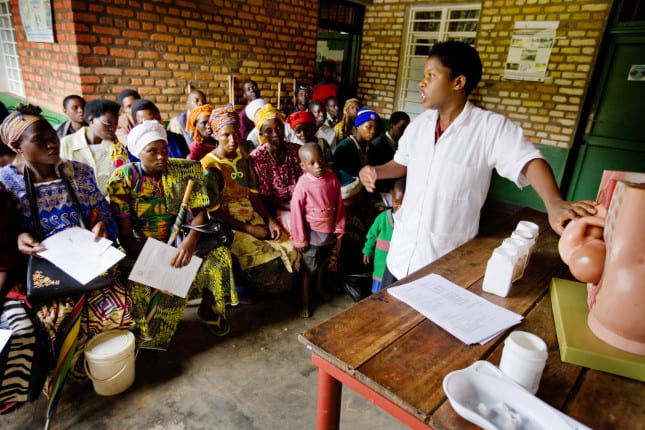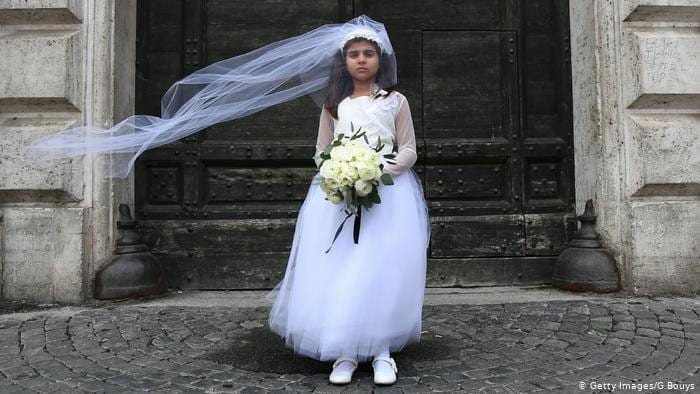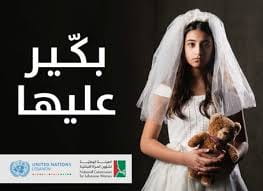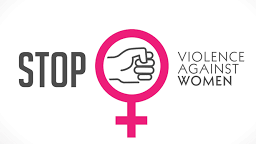
by ami31 | May 9, 2021 | Dashboard, Visualization
Childbirth is considered to be a landmark and joyous moment in any woman’s life. And although health experts say that no two childbirth experiences are the same, it is quite astounding that this can, in many cases, reach the extreme of death. According to statistics released by UNICEF, the World Health Organization (WHO), the United Nations Population Division, United Nations Population Fund (UNFPA) and the World Bank Group, around 2.8 million pregnant women and newborns die every year of preventable causes [1]. This turns childbirth into an event to be feared as it poses a significant threat to the lives of many women across the globe. According to the United Nations’ , quality education is defined as one the of the seventeen sustainable development goals (SDGs), so how can education help mitigate childbirth mortality?
“Pregnancy is not a disease. It should not lead to deaths. Every maternal death should be regarded as an abnormality.” – Vivianne Ihekweazu, Director of the Nigerian Health Watch [2]
How are Childbirth Deaths Related to Education?
The World Development Indicators data from the World Bank [3] allows us to look into the impact of education on childbirth by exploring the percentage of births that are handle by skilled health staff. In the figure below, we plot the average life expectancy at birth in years with respect to the average percentage of births attended by skilled staff for each country. There is a clear positive correlation between the two variables. We therefore conclude that children who are delivered by skilled health workers during labor are more likely to have a higher life expectancy.
However, the impact of having educated people overseeing child delivery does not stop here. Unfortunately, carrying out child delivery without proper understanding of the necessary health procedures has more alarming implications. In the dashboard below, we notice a sharp decrease in both maternal mortality (women dying during labor) and neonatal mortality (newborns dying at birth) in countries where more childbirths are handled by skilled health workers. This implies that many of the childbirth related deaths can be attributed to the lack of necessary health skills.
Where are these Childbirth Deaths Mostly Occurring?
Below we find the places that suffer the most from this by selecting the countries that have a below average percentage of births attended by skilled staff.
By looking at the geographical distribution of these countries we unsurprisingly find that the majority is located in Africa. Furthermore, we notice that the educational attainment in these countries is significantly lower than countries that have more professionally handled childbirths. This is an expected causality since to have more skilled people perform childbirth procedures we need more educated people.
So the Solution Is, Educate More People!
“The benefits of education permeate all walks of life right from the moment of birth.” – Irina Bokova, Director-General of UNESCO [4]
In light of the above, we clearly need to have more educated people that are able to professionally handle childbirth procedures. This is especially needed in developing countries where childbirth mortality is more pronounced. A key approach strategy here is to educate the local birth attendants and community midwives that are already active in these communities. These local and community health workers are already more connected to the women and families in their towns making their newly found skills more accessible and allowing them to spread health awareness to pregnant women in their communities [5]. Finally some communities in rural Africa are located in remote locations faraway from any medical supply and service centers. Therefore, setting up portable medical outposts near these towns would greatly enhance the quality of services provided by birth attendants.
References
[2] E. Onyeji, “Despite having highest maternal mortality in Africa, Nigeria’s situation still underreported – Report,”
Premium Times Nigeria, 03-Dec-2020. [Online]. Available:
https://www.premiumtimesng.com/news/headlines/429266-despite-having-highest-maternal-mortality-in-africa-nigerias-situation-still-underreported-report.html.
[3] https://datatopics.worldbank.org/world-development-indicators/
[4] “Education can save lives, help reach sustainable development goals – UN agency,”
UN News, 18-Sep-2014. [Online]. Available:
https://news.un.org/en/story/2014/09/477702-education-can-save-lives-help-reach-sustainable-development-goals-un-agency.
[5] D. Shikuku and C. Ameh, “Investing in midwifery training and education for improved maternal and newborn outcomes,”
On Medicine, 19-Mar-2021. [Online]. Available:
https://blogs.biomedcentral.com/on-medicine/2021/03/19/midwifery-training-education-maternal-newborn-outcomes-isrctn/.

by Joseph El Khoury | May 5, 2021 | Dashboard, Visualization
Children across the world and especially girls are being forced to getting married at a very early age. This would definitely destroy their dreams, childhood and future.
In the following dashboard we will be able to see who are the children that are suffering from this tragedy, its effect on the relationships and how this is evolving through the years.

by Jana Madi | May 7, 2020 | Visualization
Going over UNICEF’s datasets, I noticed that child marriage in Lebanon is very common especially for girls and there are many factors leading to these high percentages. One of the main factors would be that different religions and sects have different minimum age requirements for marriage and the absence of laws. Religious courts regulate most cases and set the minimum age to be fifteen, however, it is worth noting that some girls are forced to get married at ages younger than that.
The below visualization shows the legal marriage age across different religions in Lebanon.

Law enforcement is a major step in decreasing child marriage. Lebanon should develop a national strategy to end child marriage

by Jana Madi | May 7, 2020 | Visualization
Further to inspecting the World Development Index datasets on Tableau, I was surprised by the proportion of women subject to violence in the world. Although many NGOs and organizations are working very hard on achieving equality between men and women, violence against women is still an issue that is sometimes neglected. Digging deeper into the indicators, I noticed that the proportion of violence against women is higher in countries that have no legislation to protect women or don’t abide by the existing laws.

As we can see from the below visualization, countries that enforced laws to protect against women violence had a major decrease in the proportion of violence

It is very important to increase awareness of the causes and consequences of violence and build capacity of partners to prevent and respond to violence. Moreover; we should work on promoting the need for changing norms and behavior and advocating for gender equality and women’s rights.

by Celine Abdallah | May 5, 2020 | Uncategorized
“Transformation is often more about unlearning than learning”. – Rohr R.
As communities still follow their traditions and norms instead of educating themselves about the harms of child marriage, it continues to pose a threat to future generations to this day. Several factors shown in the dashboard can act as indicators for us to know in which countries this issue still persists. We used tableau to analyze these indicators by country and were surprised with the extent to which this issue is still present to this day and the lack of awareness about it. From our data, we categorized the indicators that are prevalent in our Country and discussed them with Lebanese activists (Mr Joe Maalouf, journalist – Ms. Hayat Mirshad, Head of communication and campaigning at RDFL). We were then able to come up with a clear picture of how the child marriage situation is in Lebanon; and accordingly, came up with solutions to reduce it.
In order to ultimately end child marriage, awareness should be raised to change cultural beliefs and norms.
It is time to put an end to child marriage!







